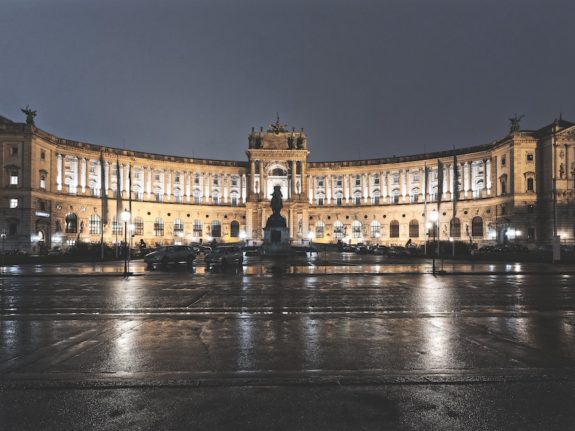Austrian capital Vienna was once the political centre of one of the world’s largest and most powerful empires. The dual monarchy of Austria-Hungary, led by the Habsburg family, ruled over most of central Europe and was a centre for arts and culture.
The Alpine country, of course, is still a great producer of arts, culture and science, but from having a population of 37.5 million by 1843, Austria is now a small landlocked country of about 9 million people.
There’s much history in between (and before) and if you want to understand Austria better, several books can help you out, according to a list published by The Economist. Here are five of the books to learn about Austria.
READ ALSO: EXPLAINED: Why is Austria so rich?
The World of Yesterday, by Stefan Zweig
Stefan Zweig was a very well-known Austrian author and journalist. He was famous for his historical studies of famous writers including Charles Dickens, Fyodor Dostoievsky, and Honoré de Balzac. He also wrote biographies on historical figures including Marie Antoinette.
When the Nazi party rose to power in Germany, he emigrated and then settled in Brazil. His memoir, Die Welt von Gestern (the World of Yesterday) was published in 1942 and is a long description of life during the final years of the Austro-Hungarian Empire.
The Economist called it a “requiem for the liberal, cosmopolitan Vienna of the late Habsburg empire”. Many see it as the most famous book on the power family that ruled much of Europe.
READ ALSO: 8 TV shows you should watch to learn about Austrian culture
Heldenplatz, by Thomas Bernhard
Heldenplatz, which is also the name of the area in front of the Hofburg Palace, a symbol of Austrian politics (and the place where Adolf Hitler was greeted happily after the annexation of the country to Nazi Germany), is a stage drama first performed in 1988.
The play reflects on nationalism, the denial of the past and the ongoing anti-Semitism in modern Austria – it created a scandal in the country at the time.
The Austrian playwriter, Bernhard, was vilified and died of a heart attack only a few months later.
READ ALSO: One day in Vienna: How to spend 24 hours in the Austrian capital
Vienna, by Eva Menasse
“In “Vienna”, her first novel, published in 2005, Eva Menasse blends fact and fiction to tell the story of three generations of Menasses, a chaotic, voluble Viennese family with Jewish roots.”, wrote The Economist.
The book is a celebrated German-language novel and a lighter view of the decades it represents (which include the Holocaust period). It was, of course, criticised by many for “brushing over” such issues.
It is still a delightful read according to reviewers and shows another side of Austrian history.
READ ALSO: 11 maps that help you understand Austria today
Leopoldstadt, by Tom Stoppard
A play that explores Jewish identity while recounting the tragic stories of a Viennese family that lived in the homonymous neighbourhood – which once had a thriving Jewish community.
Unlike Vienna, this play brushes over none of the tragedy, crimes and horrors of the Holocaust period. However, it starts even earlier as the multigenerational story begins on Christmas Day 1899, following family members until 1955.
It’s a short but beautiful read.
READ ALSO: How Austria’s newest citizens reclaimed a birthright stolen by the Nazis
Vielgeprüftes Ӧsterreich, by Paul Lendvai
Author Paul Lendvai had already published “Inside Austria” a personal account of 50 years of the country’s history – but now, Vielgeprüftes Österreich (something like “much-tested” or “long-suffering” Austria) acts as a sequel of sorts, according to The Economist.
The book hasn’t been translated into English yet, but the writer looks into Austria’s political history from the Habsburgs to the Ukrainian war, touching on subjects such as why anti-Semitism and xenophobia continue to grow in Austria and why Austrians still fall for demagogues.
READ ALSO: Why is support for Austria’s far-right FPÖ rising?





 Please whitelist us to continue reading.
Please whitelist us to continue reading.
Member comments